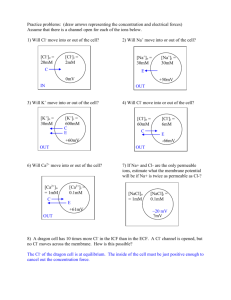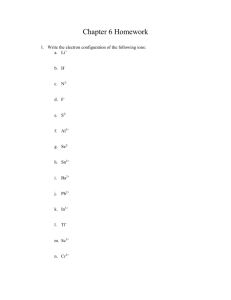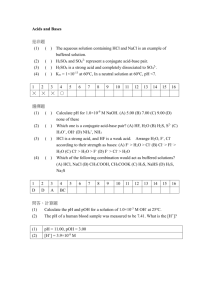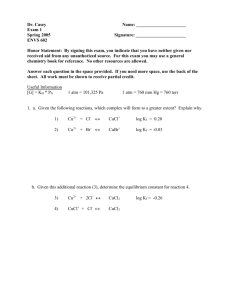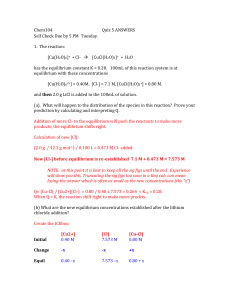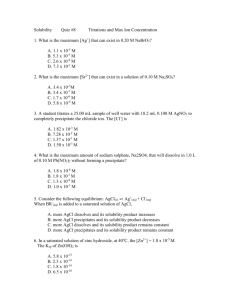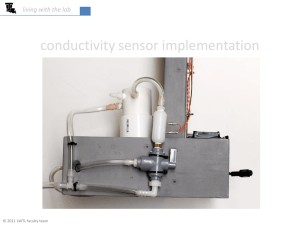Zool 352 Lecture 14
advertisement
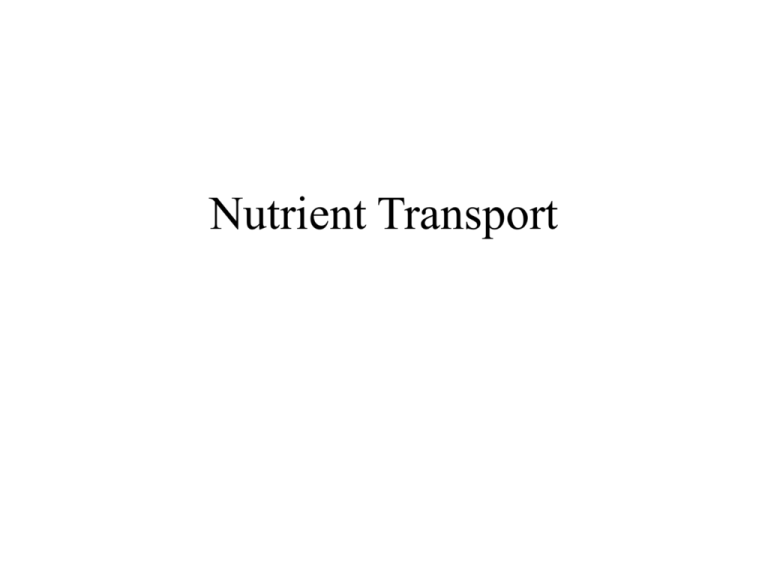
Nutrient Transport Balance Between Absorptive and Secretory Processes in Gut • • • • • • • Figures for adult human Secretion • Absorption 1500 ml saliva • 8500 ml sm. Intestine 2000 ml gastric • 400 ml colon secretion • Total: 8.9 liters/day 500 ml bile 1500 ml pancreatic juice 1500 ml intestine Total: 7 liters/day New cells (crypt cells) primarily indulge in secretion; older cells transform into mainly absorptive cells (villous cells.) Intestinal epithelial ells (enterocytes) are generated from stem cells at the bases of the villi. As they age, they ascend the villi, dying shortly after they reach the tips. Transporters in Absorptive Enterocytes (villous cells) • Apical Processes • Na+ gradient-coupled cotransporters for sugar and amino acid • Na+/H+ exchanger • Cl-/HCO3- exchanger • • • • Basolateral Processes Na+/K+ ATPase Cl- channels K+ channels Generalized picture for absorptive cells in the small intestine Important features of the transcellular path for solutes in small intestine • Processes driven by Na+ gradient: Sugar and amino acid absorption • Processes driven by metabolic CO2 production: Cl- absorption, Na+ absorption • As a result of these coupled processes, Na+/Cl- entry is electroneutral, unlike the frog skin • As in the frog skin, the Na+/K+ pump is the only primary active process. Electrical properties of the small intestinal epithelium • 1. “Tight” junctions are quite leaky, so tissue electrical resistance low • 2. Coupled, electroneutral apical processes result in small transapical voltage • As a result, intestinal transepithelial potentials are small - of order of 5-15 mV. Fluid transport by leaky epithelia • Water follows solute movement (always!) • The intestine is so leaky to water that a large osmotic gradient is not needed to drive water absorption - an almost immeasureable 1-2 mOsM difference may be sufficient. • The extreme leakiness of the epithelium to water is probably due in part to the presence of water channels, giving water a transcellular as well as a paracellular path. lack of the Cl-/HCO3- exchanger congenital chloride diarrhea • Cl- fails to be absorbed and HCO3- doesn’t get secreted • Consequences: – net Cl- loss in feces – water reabsorption impaired - diarrhea – Na+/H+exchanger still operates, so net loss of H+ and retention of HCO3- causes alkalosis. Intestinal secretion The transbasal carrier is the Na+, K+, 2Cl cotransporter (NKCC)the driving force for the NKCC is provided by the Na+ gradient. The “electrogenic” transapical Cl- movement is by way of Cl- channels. Cl- can go downhill through the channels because of the basal NKCC. Cholera- a toxin interferes with regulation of the apical Cl- channels • Open probability of apical Cl- channel is increased by cyclic adenosine monophosphate (cAMP) – ordinarily, this is an effect of activating the beta adrenergic receptors of the intestine. • Cholera toxin ribosylates the alpha subunit of Gs, converting it into a permanent stimulant of adenylyl cyclase. Cholera toxin causes secretory diarrhea • In presence of excess cAMP, Cl- channels stay open much of the time, so secretion overwhelms absorption. • Result: a secretory diarrhea, with loss of extracellular fluid volume = hypovolemia or dehydration. Apical Cl- channels are involved in secretion in a number of epithelial tissues Salivary, tear and sweat gland Respiratory airway Pancreas Kidney – the disease gets its name from its effects on renal anatomy Cystic fibrosis is the result of mutations of a common apical Cl- channel, CFTR CFTR= “cystic fibrosis transmembrane conductance regulator” Mutations reveal the function of different parts of the CFTR • Mutation at NBD1 interferes with targeting to the plasma membrane • Mutations in TM1 and TM6 reduce channel conductance • Mutations in the regulatory domain (R) make the channel insensitive to regulatory signals that would turn it on. Ordinarily, phosphorylation of R activates the channel. The upper traces at the left show the activity of the CFTR channel from shark epithelium. The open circles in the V/I plot are for the shark channels; the closed ones are for the human channel. CFTR Some reabsorptive epithelia reverse the picture for secretory epithelia The cartoon of the thick ascending limb of the loop of Henle in the kidney shows NKCC on the apical membrane and CFTR on the basolateral membrane. The presence of CFTR in this tissue explains why CF patients have renal symptoms. At the end of this lecture you should be able to: Summarize the mechanisms typically involved in salt reabsorption in “tight” epithelia like the frog skin and in “leaky” epithelia like the intestine. Contrast the mechanisms typically involved in reabsorptive epithelia with those involved in secretory epithelia. Explain the underlying cellular basis of cholera diarrhea and cystic fibrosis. Explain the basis for inclusion of glucose and Na+ in rehydration solutions.
